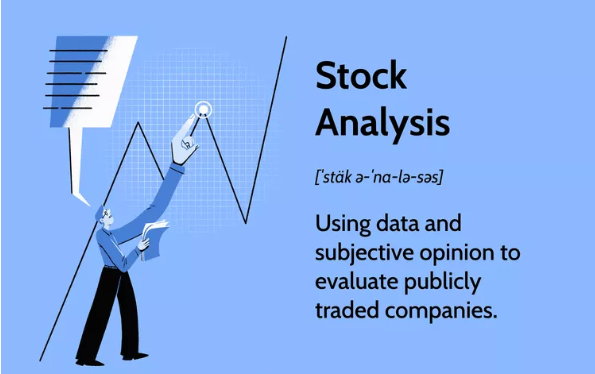How to Analyze a Stock Before Buying
Investing in individual stocks can be exciting and potentially profitable but it’s not something to dive into blindly. Before buying any stock, it’s important to do your homework. This process is called stock analysis, and it helps you make informed decisions instead of relying on hype, tips, or guesswork.
In this guide, we’ll walk you through how to analyze a stock step by step using key metrics and factors that both beginners and experienced investors rely on.
Why Analyzing a Stock Matters
Every stock represents a slice of ownership in a company, and you wouldn’t want to invest in a company without knowing how it makes money, how much it’s worth, or how it’s performing, right?
Stock analysis helps you:
-
Determine if a stock is fairly valued.
-
Understand the company’s financial health.
-
Predict its future growth potential.
-
Avoid overpaying or buying into poor-quality businesses.
📊 Two Types of Stock Analysis
There are two primary methods to analyze stocks:
-
Fundamental Analysis – Focuses on a company’s financials, industry position, and long-term potential.
-
Technical Analysis – Focuses on stock price trends and patterns using charts.
This post will focus mainly on fundamental analysis, which is essential for long-term investors.
🧠 How to Analyze a Stock in 7 Steps
1. Understand the Business
Before diving into numbers, understand what the company does:
-
What products or services does it offer?
-
Who are its customers?
-
Is the industry growing?
A good investor only buys into businesses they understand.
📘 Tip: Read the company’s mission, recent news, and industry trends.
2. Check the Financial Statements
Review the company’s core financial documents:
-
Income Statement: Reveals revenue, profit, and expenses.
-
Balance Sheet: Shows assets, liabilities, and equity.
-
Cash Flow Statement: Tells you how money flows in and out of the business.
Look for:
-
Growing revenue and profits over time
-
Strong cash flow
-
Low debt levels
-
Healthy profit margins
You can find these statements on company websites (Investor Relations), Yahoo Finance, or sites like Morningstar.
3. Look at Key Ratios
Ratios make it easier to compare companies. Important ones include:
| Ratio | What It Means |
|---|---|
| P/E (Price to Earnings) | How much investors pay per $1 of earnings. Lower = cheaper. |
| PEG (P/E to Growth) | P/E adjusted for growth. A PEG < 1 may indicate undervaluation. |
| ROE (Return on Equity) | Measures profitability. Higher = better efficiency. |
| Debt-to-Equity | Compares company debt to equity. Lower = safer balance sheet. |
| Dividend Yield | Shows income return from dividends. |
💡 Compare these ratios to other companies in the same industry.
4. Assess the Company’s Competitive Advantage
Also known as an economic moat, this refers to how well a company can defend its market position. Ask:
-
Does the company have a strong brand?
-
Does it benefit from network effects (e.g., Apple, Google)?
-
Are there high switching costs for customers?
Companies with a wide moat can maintain profits and outlast competitors.
5. Evaluate Growth Potential
Look at both historical and future growth:
-
Has the company been growing consistently?
-
What are analysts forecasting?
-
Is the market expanding?
Tools like Yahoo Finance or Seeking Alpha offer earnings growth estimates.
6. Check the Stock’s Valuation
Even a great company can be a bad investment at the wrong price. Use valuation tools to check if the stock is:
-
Undervalued
-
Overvalued
-
Fairly priced
Common valuation methods:
-
P/E ratio comparison
-
Discounted Cash Flow (DCF) models
-
Price-to-Sales and Price-to-Book ratios
7. Monitor the News and Industry Trends: How to Analyze a Stock Before Buying
Company performance is influenced by:
-
Industry developments
-
Government regulations
-
Economic trends (inflation, interest rates)
-
Competitive threats
Always stay updated on the macro and micro factors that can impact your stock.
Tools You Can Use: How to Analyze a Stock Before Buying
Here are some free tools to assist your analysis:
-
Yahoo Finance
-
Google Finance
-
Morningstar
-
Seeking Alpha
-
Finviz
✅ Final Tips Before You Buy: How to Analyze a Stock Before Buying
-
Don’t follow the hype. Just because a stock is trending doesn’t mean it’s a good buy.
-
Look at long-term trends, not just recent gains or losses.
-
Diversify don’t put all your money into one stock.
-
Review regularly, but avoid checking prices daily if you’re a long-term investor.
🏁 Final Thoughts on How to Analyze a Stock Before Buying
Analyzing a stock might seem complex at first, but once you understand the basics, it becomes a powerful tool to build wealth wisely. Take the time to research thoroughly, and don’t rush into any decision.


